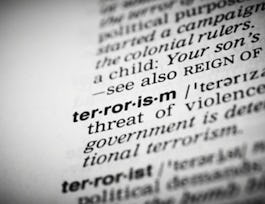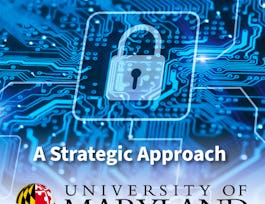Welcome to Course 1 in CS4950, Homeland Security and Cybersecruity. In this course we examine the origins of homeland security and its connection with cybersecurity. Homeland security is about safeguarding the United States from domestic catastrophic destruction. Catastrophic destruction comes in two forms: natural and man-made. For most of history the man-made variety came in the form of warfare and required the combined resources of a nation state. All that changed March 20th, 1995. On that date, members of a quasi-religious cult in Japan attacked the Tokyo subway system using Sarin gas. It was the first deployment of a weapon of mass destruction my a non-state actor. The power of destruction once reserved to nation states was now available to small groups, even individuals. The incident was a wake up call for governments around the world. Defense establishments designed to keep rogue states in check were practically useless against non-state actors. Overnight, the number of potential enemies multiplied a hundred, maybe even a thousand-fold. In response to the Tokyo Subway Attacks, the United States took measures to protect itself from WMD attack by non-state actors. Those measures were still being enacted when the nation was attacked on 9/11. On September 11, 2001, nineteen hijackers inflicted as much damage as the Imperial Japanese Navy on December 7, 1941. The investigating 9/11 Commission noted the attacks for their "surpassing disproportion". The hijackers had achieved WMD effects without using WMD. They did this by subverting the nation's transportation infrastructure, turning passenger jets into guided missiles. Again, the security implications were profound. Non-state actors seeking to inflict domestic catastrophic destruction did not need to import, fabricate, or acquire WMD as the nation was surrounded by the means of its own destruction in the form of critical infrastructure. The vulnerability of critical infrastructure had not gone unnoticed. Again, in response to the Tokyo Subway attacks, which themselves had been an attack on Japanese infrastructure, President Clinton in 1996 commissioned a panel to investigate the threat to United States' infrastructure. The panel replied in 1997 that there was no immediate threat to US infrastructure, but they were concerned with the growing risk of cyber attack. The same cyber physical systems that fueled the explosive growth of the Internet were being incorporated into Industrial Control Systems that underpinned much of the nation's critical infrastructure. The panel noted that the knowledge and skills necessary to mount a cyber attack on the nation's infrastructure was growing. As a result of this observation, President Clinton in 1998 ordered the protection of US critical infrastructure, especially from cyber attack. Following 9/11, critical infrastructure protection and cybersecurity were designated core missions in the 2002 Homeland Security Act establishing the new Department of Homeland Security. They remain core missions to this day, but many don't see the connection. The connection is this: cybersecurity is essential to critical infrastructure protection, which is essential to homeland security, which is about safeguarding the United States from domestic catastrophic destruction. I look forward to working with you in the coming lessons. Best wishes and good luck!



Homeland Security & Cybersecurity Connection - It's Not About the Terrorists
This course is part of Homeland Security and Cybersecurity Specialization

Instructor: Richard White
Sponsored by BrightStar Care
11,310 already enrolled
(375 reviews)
Skills you'll gain
Details to know

Add to your LinkedIn profile
13 assignments
See how employees at top companies are mastering in-demand skills

Build your subject-matter expertise
- Learn new concepts from industry experts
- Gain a foundational understanding of a subject or tool
- Develop job-relevant skills with hands-on projects
- Earn a shareable career certificate


Earn a career certificate
Add this credential to your LinkedIn profile, resume, or CV
Share it on social media and in your performance review

There are 4 modules in this course
Homeland security is about safeguarding the United States from domestic catastrophic destruction. Domestic catastrophic destruction comes in two forms: natural and manmade. For most of history, the manmade variety came in the form of warfare and required the combined resources of a nation state. In this module we examine two pivotal incidents that changed that calculus, and demonstrated how destruction once reserved to the power of nation states was wrested by non-state actors.
What's included
5 videos7 readings3 assignments1 discussion prompt
This module tackles the question "what is homeland security", and offers a working definition to help guide the student to understanding. It also looks at the mission of the Department of Homeland Security as it relates to "Safeguarding the United States from Domestic Catastrophic Destruction". Also included in this module is course exam #1. Good luck!
What's included
2 videos4 readings3 assignments1 discussion prompt
Manmade domestic catastrophic destruction comes in two known forms: 1) weapons of mass destruction, and 2) subverting critical infrastructure. This module looks at the nation's overall strategy for countering WMD, and protecting critical infrastructure.
What's included
2 videos3 readings2 assignments1 discussion prompt
As stated previously, homeland security is connected to cybersecurity through critical infrastructure protection. How this insight came about and what is meant by "cybersecurity" are the focus of attention in this module. Also included in this module is course exam #2 and related project assignment. Good luck!
What's included
3 videos4 readings5 assignments1 discussion prompt
Instructor

Offered by
Why people choose Coursera for their career




Learner reviews
375 reviews
- 5 stars
76.12%
- 4 stars
20.42%
- 3 stars
2.65%
- 2 stars
0.53%
- 1 star
0.26%
Showing 3 of 375
Reviewed on Sep 20, 2018
Dept of Homeland Security. What it does, why it does it the past and the future.
Reviewed on Feb 10, 2021
I possess a degree in counter terrorism and this course had a lot of good review. I learned a few new things as well.
Reviewed on Jul 17, 2024
The course was good, but the layout of the quizzes was confusing, I have screenshots if you are at all interested.
Recommended if you're interested in Social Sciences

Universiteit Leiden

University of Maryland, College Park

Board Infinity

Open new doors with Coursera Plus
Unlimited access to 10,000+ world-class courses, hands-on projects, and job-ready certificate programs - all included in your subscription
Advance your career with an online degree
Earn a degree from world-class universities - 100% online
Join over 3,400 global companies that choose Coursera for Business
Upskill your employees to excel in the digital economy



